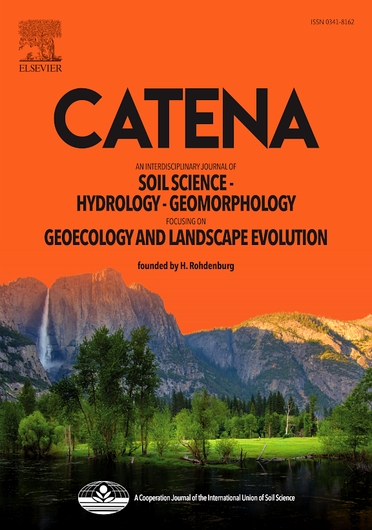Evaluation of exclosures in restoring degraded landscapes in the semi-arid highlands of northwestern Ethiopia
Abstract
Land degradation is a severe environmental problem in the northern and northwestern Ethiopian highlands. As a response to increasing land degradation, rehabilitation of degraded grazing lands through exclosures (exclusion of farmers and domestic animals) has been undertaken. This study aimed to evaluate the effectiveness of 11 and 8-year exclosures in improving degraded landscapes in the Karita-Wuha and Dengora watersheds. It was assumed that the conditions on communal grazing lands at the time of the investigation corresponded to those at the establishment of exclosures. Vegetation was inventoried, and soil samples were collected and analyzed in 14 and 21 sampling sites selected from exclosures and communal grazing lands in Dengora and Karita-Wuha watersheds, respectively. Sampling plots (20 × 20 m) were established for soil sampling. In the two land uses, 10x10 m and 5x5 m sub-plots were used to survey trees and bushes/shrubs, respectively. Richness, diversity, evenness, and aboveground biomass (AGB) were evaluated using measurements from the vegetation inventory. Organic carbon (OC), total nitrogen (TN), and available phosphorus (AP) and their stocks were used as soil nutrient indicators. The result showed that exclosures aided in restoring vegetation in both watersheds and soil nutrient parameters in the Dengora watershed compared with communal grazing lands. In the Karita-Wuha watershed, there was significantly higher OC, TN, and their stocks in communal grazing land than exclosures (t-test, p < 0.05). These results are generally attributed to the fact that communal grazing lands were significantly degraded before exclosure and have yet to recover. As a result, exclosures of Dengora and Karita-Wuha watersheds were limited in restoring degraded landscapes. There have been differences in the effectiveness of < 11- and > 11-year exclosures in restoring degraded landscapes in the literature. The effectiveness of various aged exclosures in restoring degraded landscapes is likely variable and dependent on local biophysical parameters and land use systems.

